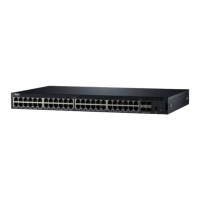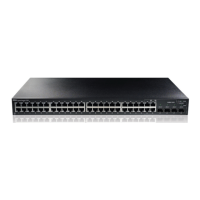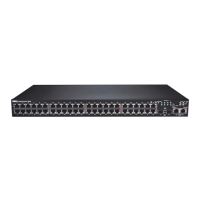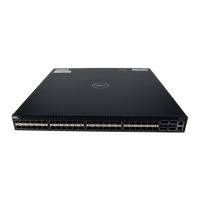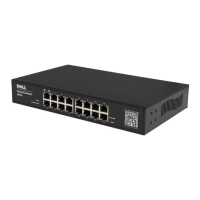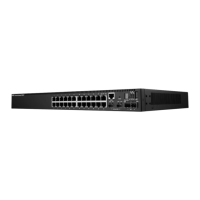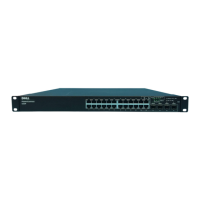236 Network Administration: Quality of Service
FILE LOCATION: C:\Users\gina\Desktop\Checkout_new\Dell Astute\User
Guide\Dell_Astute_Network_Admin_QoS.fm
DELL CONFIDENTIAL – PRELIMINARY 8/9/16 - FOR PROOF ONLY
DSCP Mapping
When a policer is assigned to a class map (flow), you can specify the action to
take when the amount of traffic in the flow(s) exceeds the QoS-specified
limits. The portion of the traffic that causes the flow to exceed its QoS limit
is referred to as out-of-profile packet
s
.
If the exceed action is Remark DSCP (as opposed to Drop), the switch
rewrites the original DSCP value of the out-of-profile IP packets to a new
value, based on the values entered in the
"DSCP Mapping
" on page 236 page.
The switch uses the new values to assign resources and egress queues to these
packets. The switch physically replaces the original DSCP value in the out-of-
profile packets with the new DSCP value.
To use the Remark DSCP exceed action, set the DSCP Out value in the
"DSCP Mapping
" on page 236 page. Otherwise the action is null, because the
DSCP value in the packet is rewritten to the original DSCP value, set by
factory default.
To set new DSCP values:
1
Click
Network Administration > QoS Mapping
>
DSCP Mapping
.
2
If the
Exceed Action
is
Out-of-Profile DSCP
(in the "Policy Class Maps "
on page 240 page) or
Exceed Action
is
Remark DSCP
(in the "Aggregate
Policer " on page 238 page), the
DSCP In
values are rewritten with the
DSCP Out
values. Set the
DSCP Out
values as required.
Class Mapping
A Class Map defines a traffic flow associated with an ACL(s). A MAC-based
ACL, IP-based ACL, and an IPv6-based ACL can be combined into a class
map. Class maps are configured to match packet criteria on a match-all or
match-any basis. They are matched to packets on a first-fit basis, meaning
that the action associated with the first-matched class map is the action
performed by the system. Packets that match the same class map belong to
the same flow.
There are two possible types of matching:
•
match-all
— Traffic matches class map if it matches IP/IPV6 and MAC
ACLs
•
match-any
— Traffic matches class map if it matches at least one of the
ACLs
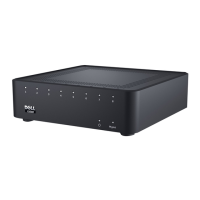
